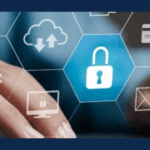Ransomware Revisited
 Ransom: a sum of money is demanded in order for the release of goods.
Ransom: a sum of money is demanded in order for the release of goods.
Software: the programs and other operating information used by a computer.
What do you get when you combine the two? Ransomware.
Ransomware is a form of a cyberattack in which a cybercriminal encrypts some of the files your business has stored on network-attached drives. Cybercriminals use phishing attacks or other methods to leverage encryption of your business’ devices, and potentially the rest of your network. Ransomware has proven effective over the years due many businesses fulfilling the demands of these cybercriminals – payment.
Who Ransomware Affects
Ransomware could affect anybody, but cybercriminals have acquired experience over the years. They are learning who to target, and who is willing to pay a sum of money to acquire their own documents, devices, and servers back. The target of choice? Municipalities.
While the number of ransomware infections has decreased, the FBI’s Internet Crime Complaint Center has stated that the damages experienced by these infections has risen. This is partly due to the fact that entire cities can essentially be shut down by these cybercriminals. Cities such as Lake City, FL and Riviera Beach, FL, felt as though they had no other option than to pay ransom. Indiana’s LaPorte County paid a ransom of roughly $130,000 in early 2019.
Since cybercriminals have been strategically targeting municipalities, insurance is offered to cover such attacks. Since insurance is offered to cover these attacks, cybercriminals have been more strategically targeting municipalities, believing (rightfully so, in many cases) that the insurer will just tell the victim to pay the ransom. Insurance carriers tend to feel it’s less expensive to pay the ransom and recover the data, than it is to do the dirty work of rebuilding the network. They also seem to feel that there’s no way to avoid ransomware in the first place (that’s a story for another day). This is a chaotic snowball effect which does not show signs it will be slowing in the near future. The best way to prevent your business from being rolled into this chaotic era of cyberattacks is by being prepared.
Preparation Is Key
Minimizing the risk of your data being lost to a ransomware attack starts with a backup plan. Up-to-date backups of your data should be kept isolated, ensuring a cyber riminal cannot gain access. These backups must also be thoroughly tested and easily recoverable. The only thing worse than finding out your business has been affected by a ransomware attack is finding out your business has been affected by a ransomware attack and your backup has failed.
Education is another key element in preparing for a ransomware attack. Employees must be trained to spot phishy emails to ensure cybercriminals are not able to penetrate your security layers and encrypt your computer, or your server.
Having proper security solutions in place (email protection, endpoint protection, ransomware protection, and proper firewalls) surely won’t hurt matters, either.
For more help and assistance defending against ransomware, reach out to your local experts at Ashton Technology Solutions by calling 216 397-4080 today.





